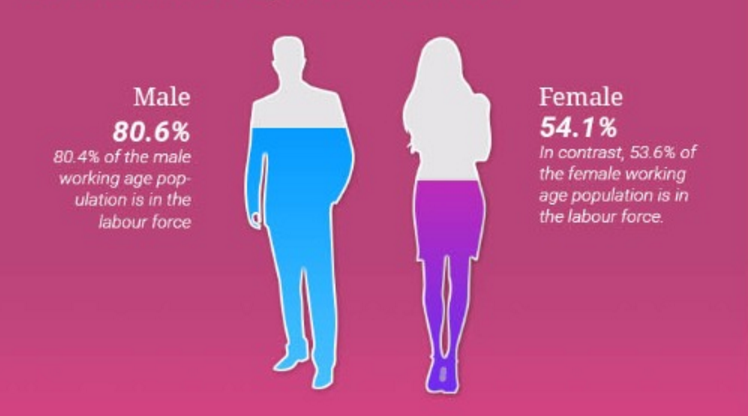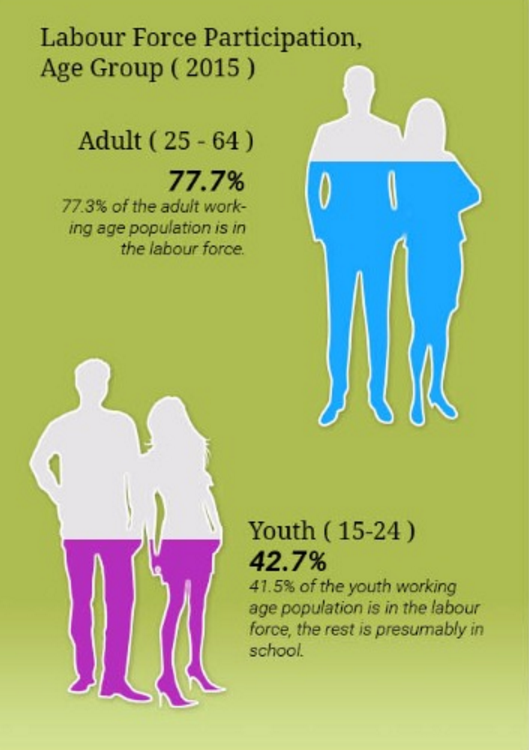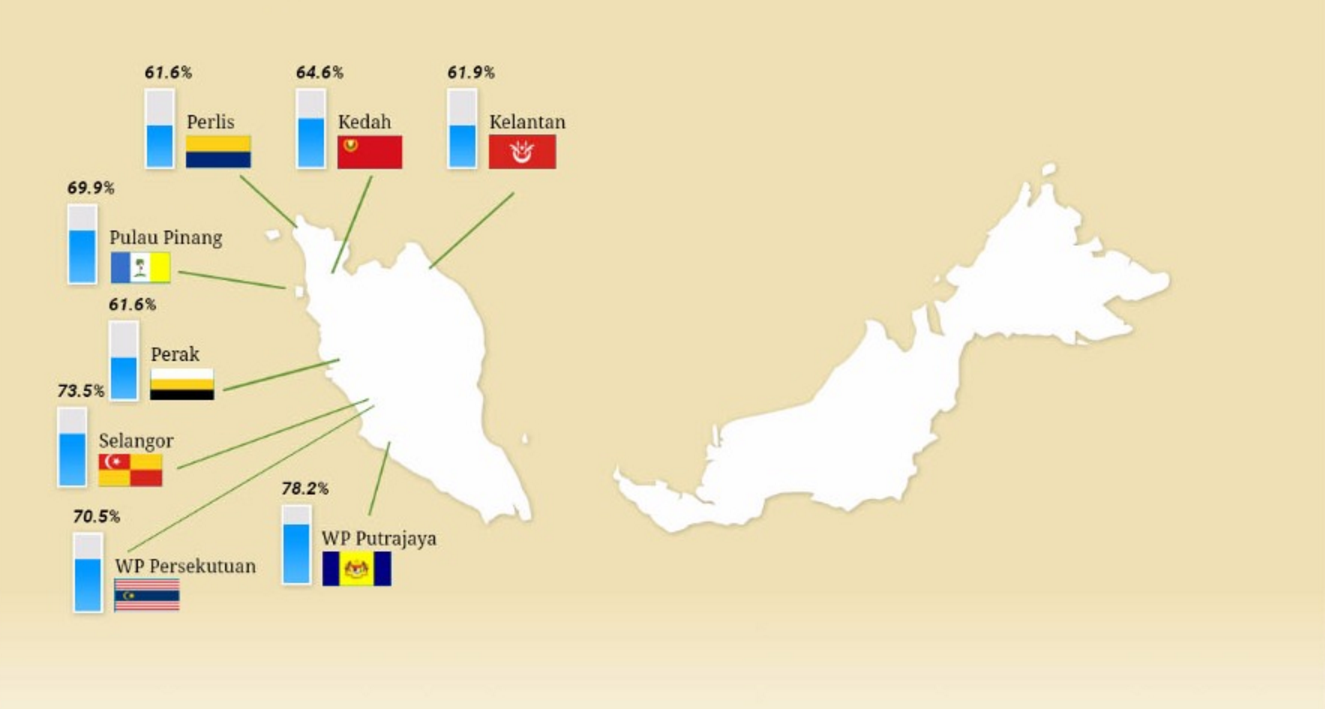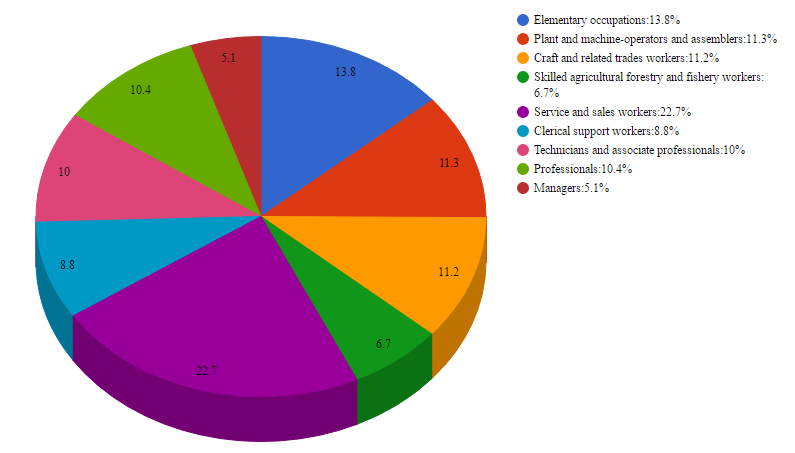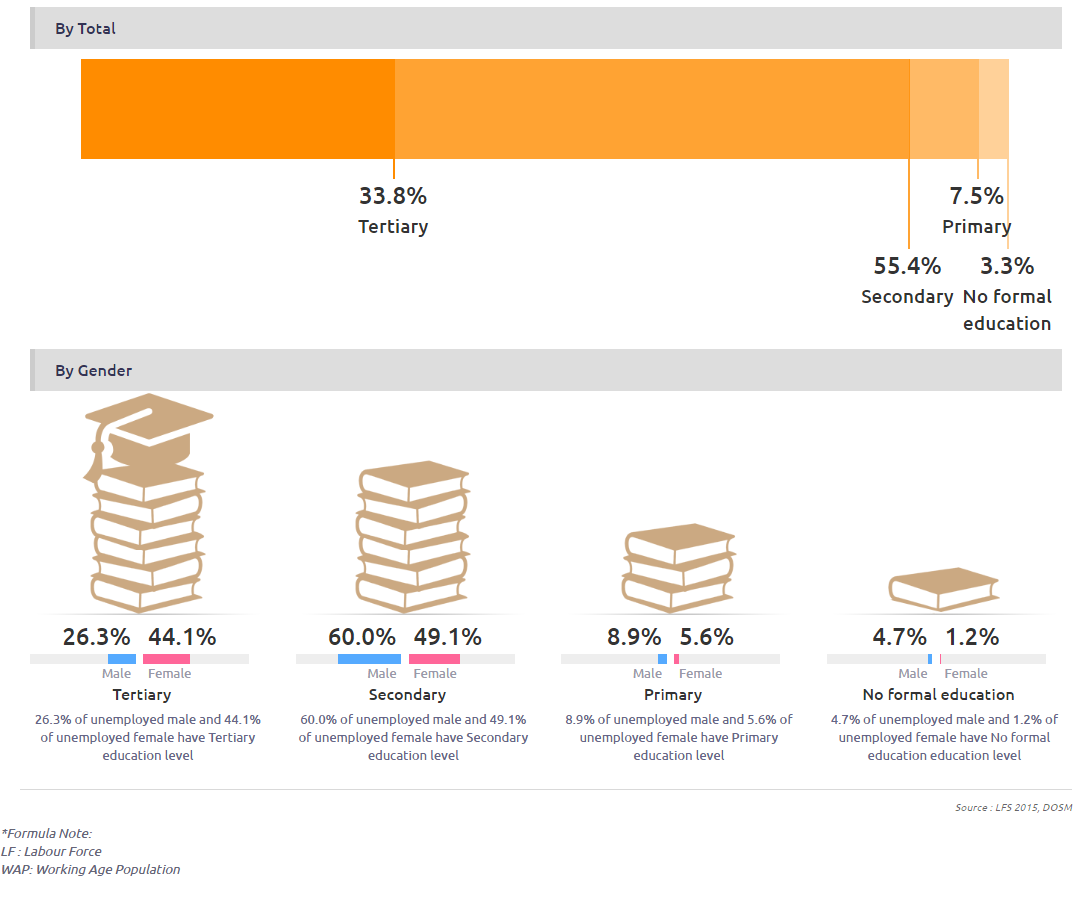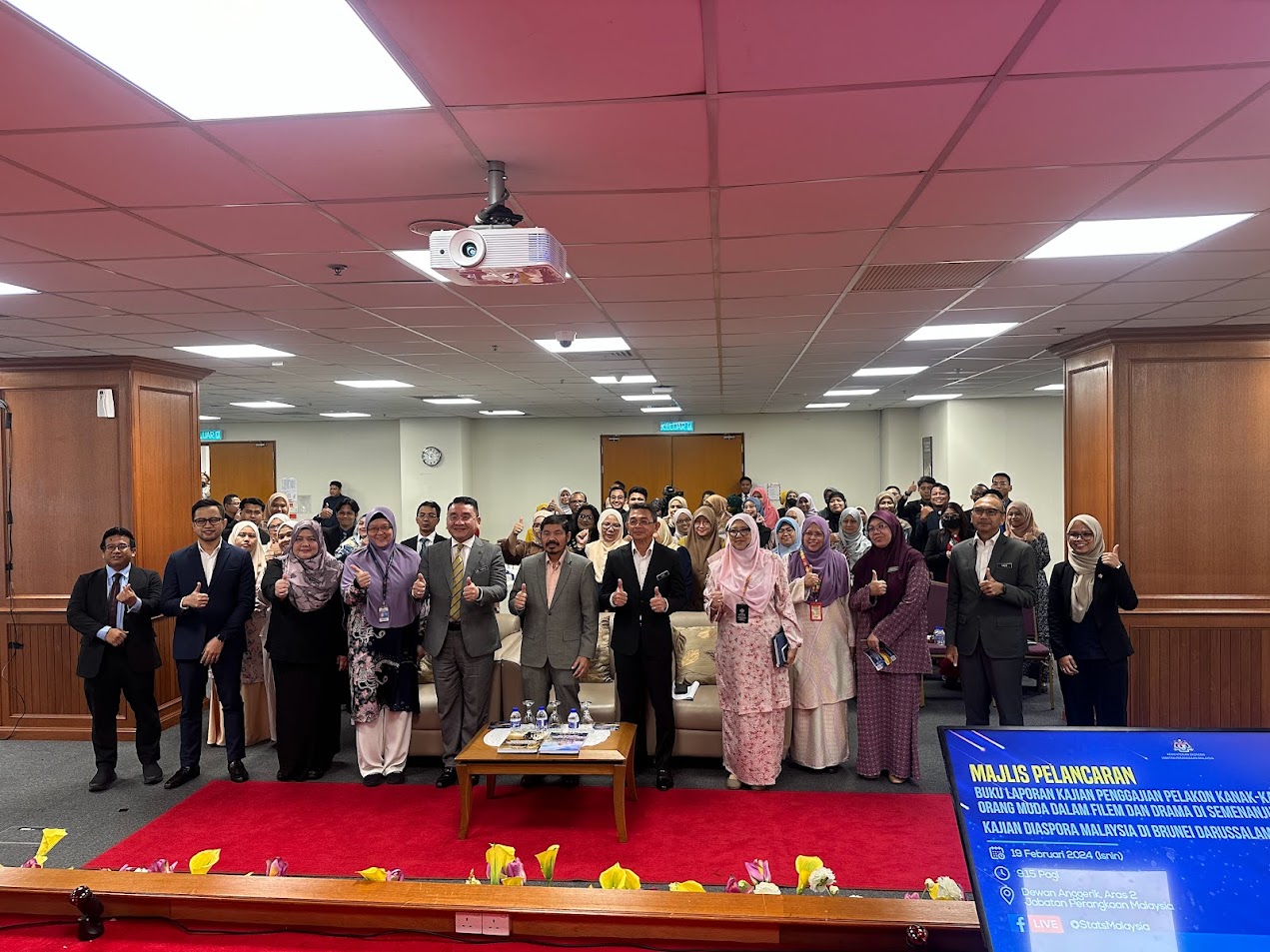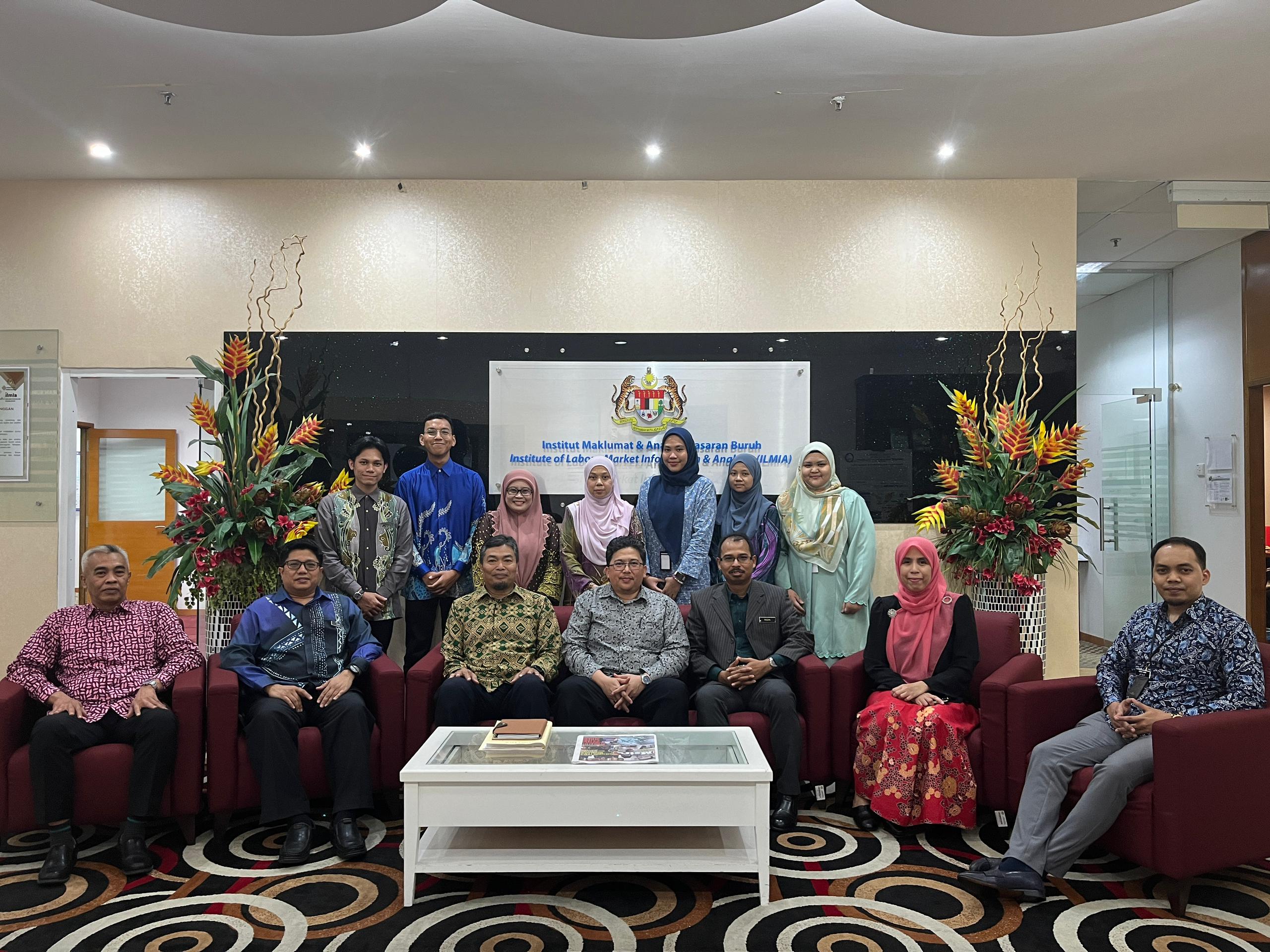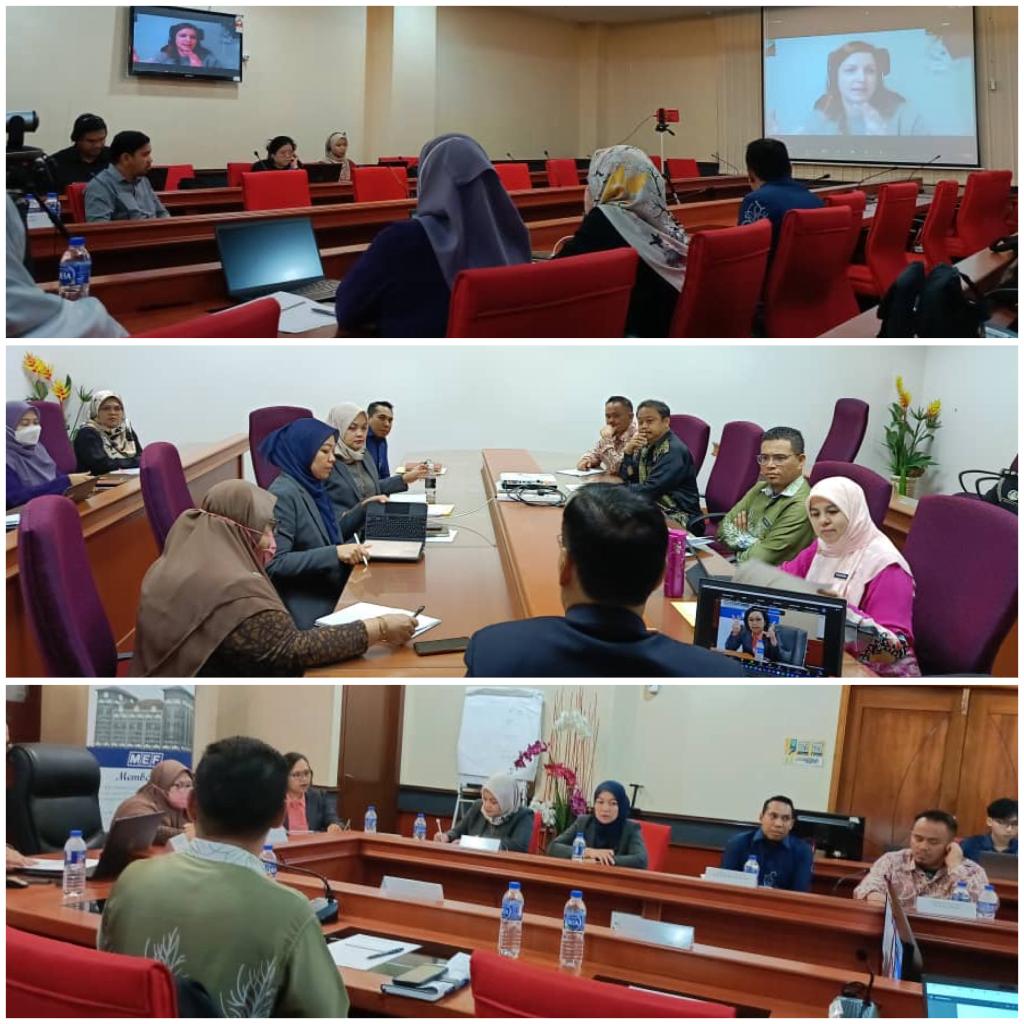Core indicators
Follow the International Labour Organisation (ILO)'s Key Indicators of Labour Market or KILM. ILO has derived 17 indicators from national labour market data which include measures of employment, variables relating to employment (such as status of employment), unemployment as well as labour productivity. These indicators have sub-categories reflecting socio- demographic characteristics (eg: gender, age group). These indicators maybe used to address the key questions relating to productive employment and decent work as well as to guide government policy for developing efficient labour markets. The new edition includes an analysis of the link between education and access to the labour market.
Key Indicators of Labour Market (KILM)
Labour force participation rate
Employment to Population Ratio
Status in employment
Employment by sector
Employment by occupation
Hours of work
Employment in the informal economy
Unemployment
Dashboard & Data Mart
General Explanation for Labour Market Indicators
Key Indicators
Labour Force
Employed
Unemployed
Labour Force Fact, 2015
Labour force refers to all persons within the 15-64 years age-group who are either employed or unemployed during the reference week.
This indicator has details by gender, age group and state.
Labour Force Participation Rate (LFPR)
67.9% of the working age population is in the labour force whilst the rest would be out of the labour force
Labour Force Participation Rate, Gender (2015)
Labour Force Participation Rate, Age Group (2015)
Labour Force Participation Rate, State
Employment Fact, 2015
Employment refers to all working age persons who at any time during the reference week worked at least one hour for pay, profit or family gain.
The rest are presumably unemployed or not on the labour force. This indicator has details by gender, age group, sector and occupation.
Total Employment Rate
65.8% of theworking age population is employed in Malaysia, which is close to the overall participation rate.
Employment Rate, Gender (2015)
Employment Rate, Age Group (2015)
Employment Rate, Sector (2015)
Employment Rate, Occupation
Unemployment Fact, 2015
The unemployment rate measures all persons in the workforce who did not work but were actively looking for work during reference week.
This indicator has details by gender,age group and education attainment.
Unemployment Rate
Unemployment Rate
65.8% of theworking age population is employed in Malaysia, which is close to the overall participation rate.
 Bahasa Melayu
Bahasa Melayu  English
English 









